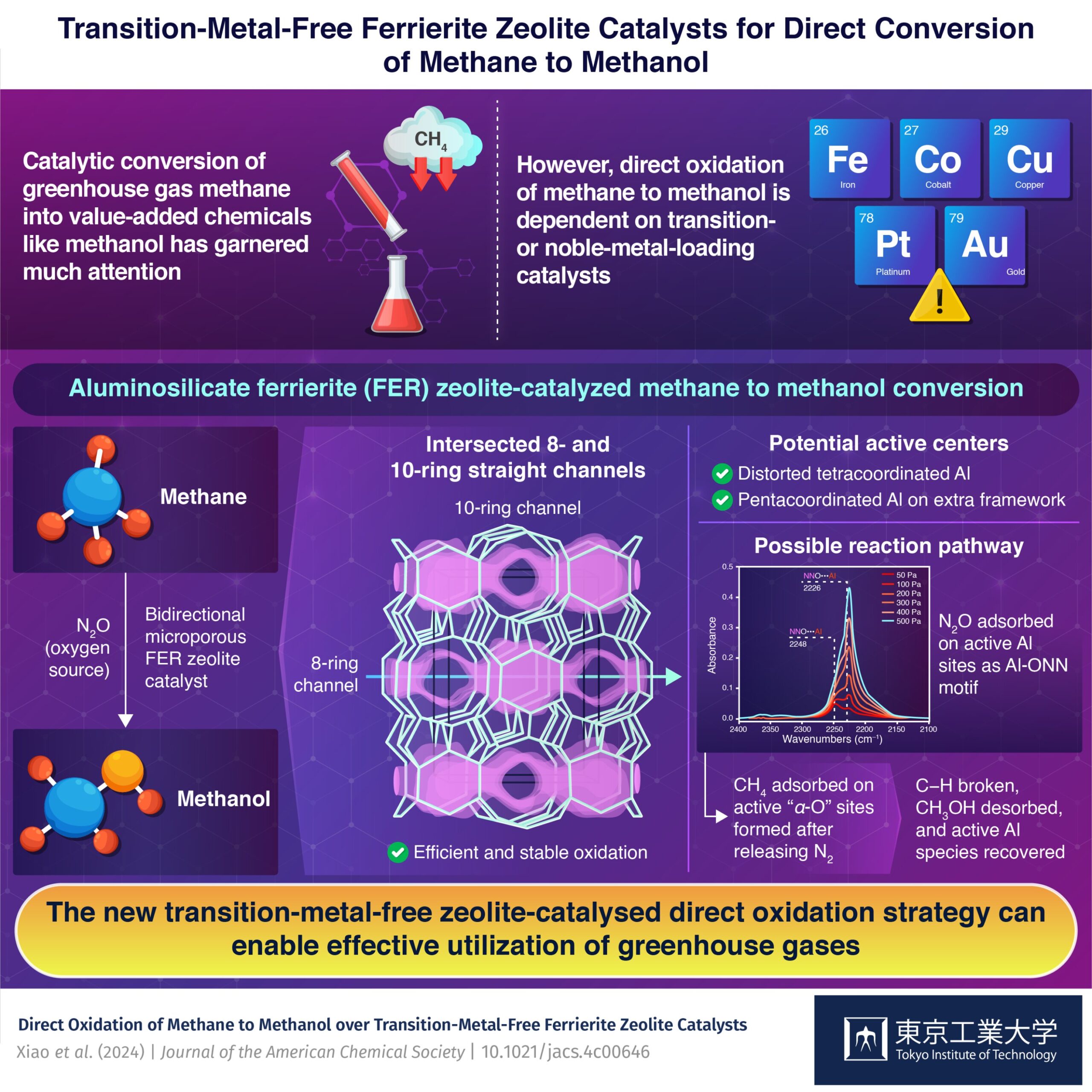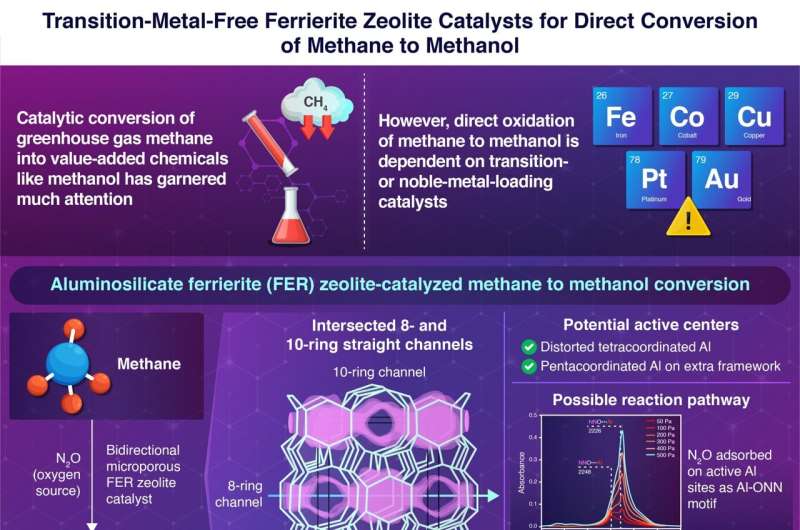

In light of the waste-to-wealth movement, technology for converting greenhouse gases into value-added materials has gained significant attention in recent years. One such technology is the catalytic conversion of methane into methanol, a widely used industrial solvent and raw material for chemical synthesis. The industrial process for conversion of methane to methanol is extremely energy and resource-intensive.
In the past decade, scientists have developed several catalyst systems that can enable direct oxidation of methane to methanol. However, most of them are based on rare and expensive transition or noble metals.
In a recent study, a group of researchers, led by Associate Professor Toshiyuki Yokoi and including Assistant Professor Peipei Xiao, both from the Nanospace Catalysis Unit of the Institute of Innovative Research at Tokyo Institute of Technology, Japan, found a solution to the existing problem in the form of transition-metal-free aluminosilicate ferrierite (FER) zeolite. FER is a 2-dimensional zeolite with 8-ring channels and intersected 10-ring channels known to be highly stable towards chemical and thermal treatments.
Taking advantage of this unique structural property, Yokoi and his team demonstrated for the first time the direct oxidation of methane to methanol using nitrous oxide as the source of oxygen. The findings of this study were published in the Journal of the American Chemical Society on April 10, 2024.
“Transition-metal exchanged zeolites have widely been used in gas- and liquid-phase reaction systems. Such moieties have been reported to have active sites inspired by natural biocatalytic enzyme systems.
“While the catalysts with transition-metal loading are quite popular, zeolite catalysts consisting of only main group elements for direct oxidation of methane to methanol remained unexplored,” remarks Yokoi when asked about the motivation behind developing FER zeolites.
To get a clear picture of the active sites in the zeolite catalyst, the team conducted Fourier transform infrared spectroscopy (FTIR) and magnetic resonance spectroscopy. The tests revealed distorted tetracoordinated Al in the framework and pentacoordinated Al in the extra framework formed during the activation, calcination, and reaction processes. These structures were established as potential active centers.
The team also probed the possible reaction pathway with the help of nitrous oxide adsorption FTIR spectra and observation of reaction performances under different oxidants. They found that the process began with the absorption of nitrous oxide on the active Al sites and the formation of “α-O” leading to the release of nitrogen.
This was followed by the adsorption of methane on the active “α-O” sites and the breaking of C−H bonds. After the bond breaking, methanol was obtained via desorption followed by recovery of the active Al species.
The new transition-metal-free zeolite-catalyzed direct oxidation process enabled 305 μmol g−1 min−1 methanol production rate with 89% methanol and 10% dimethyl ether selectivity, thus, recording one of the highest performances reported in the literature, even better than many transition metal-loaded catalysts.
“Our findings will open up a brand-new avenue for the development of direct oxidation of methane to methanol on transition-metal-free aluminosilicate zeolites, thus enabling the utilization of methane and nitrous oxide to other useful chemicals on aluminosilicate zeolites with different topological structures,” adds Yokoi, describing the real-life implications of their research.
Overall, the new strategy proposed in this study can create a positive environmental impact by reducing the amount of greenhouse gases circulating in the atmosphere and adding to the economy by facilitating the synthesis of valuable chemicals from unwanted raw materials.
More information:
Peipei Xiao et al, Direct Oxidation of Methane to Methanol over Transition-Metal-Free Ferrierite Zeolite Catalysts, Journal of the American Chemical Society (2024). DOI: 10.1021/jacs.4c00646
Provided by
Tokyo Institute of Technology
Citation:
A transition-metal-free zeolite catalyst for direct conversion of methane to methanol (2024, June 3)
retrieved 3 June 2024
from https://phys.org/news/2024-06-transition-metal-free-zeolite-catalyst.html
This document is subject to copyright. Apart from any fair dealing for the purpose of private study or research, no
part may be reproduced without the written permission. The content is provided for information purposes only.